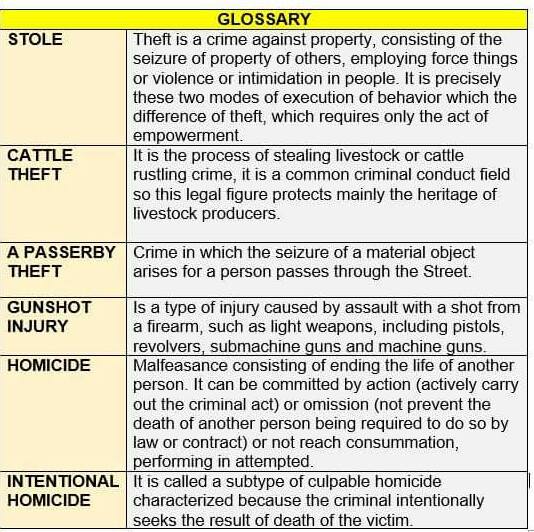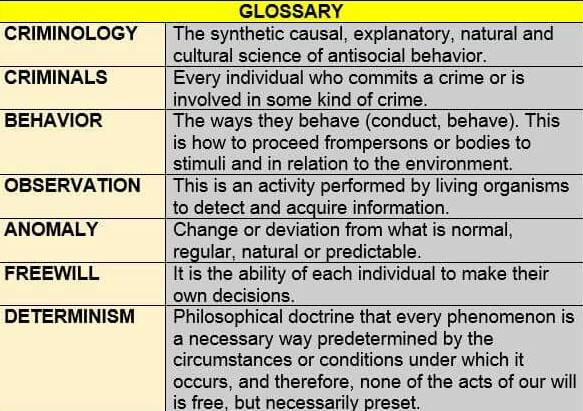CRIMINAL STATISTICS
Statistics is a science that collect, analyze and interpret data from a given survey, graphics or event. This in turn is divided into two types of descriptive and inferential; It makes us the first reference to descrpcion of the characteristics of a data set is obtained by the measures of central tendency and generalizing the entire population; the second makes the analysis of a certain portion of the population, studies and draw general conclusions. Criminology statistics helps us to learn more about the most common local, federal, etc through surveys conducted for crimes population.

ADDRESSES CRIMINOLOGICAL
The Criminology is considered a young science however, since ancient times there has been anti-social behavior of man and thus the offense for which has been concerned with studying and its evolution, the first violation of the law was when God created man and women, He forbade them eating the fruit of a tree, they disobeyed and were banished from paradise.
Also the first offense that marks the Bible is the murder of Abel by his brother Cain. Throughout history this phenomenon has been analyzed by various thinkers and even very ancient cultures such as Mesopotamia one of the oldest cultures where the code of Hammurabi arises in 1726 BC, this code can find many preventive measures, and a plan of Criminological Policy.

SPECIAL CRIMES
This concept can be defined easily and simply, as these crimes are those encuntran established in a criminal procedure code and a secondary law.
What is the Theory of Crime?
Crime theory is a hypothesis that expose system, from a certain dogmatic trend, what are the elements that make it possible or not the application of a criminal legal consequence, a human action are.
Its object of study is the "crime"
Definition of crime, "typically unlawful and culpable conduct" (RYAN ORTIZ ORTIZ
Elements of the offense
| POSITIVE ASPECTS OF CRIME: | WEAKNESSES OF CRIME: |
|
a) Activity b) Typicality c) Illegality. d) Liability e) Guilt f) Objective conditions g) Punishability |
a) Lack of action b) Lack of type c) Causes of justification d) Non-imputability e) culpability f) Lack of objective conditions g) acquittals Excuses |
CLASSIFICATION OF CRIME
|
1. By its severity Crimes Offenses Fouls |
6. For the inner member Death Intentional |
|
2. In the form of the agent's conduct Action Omission Simple omission Commission default |
7. simple and complex Crimes Simple Complexes |
|
3. For the results Formal Materials |
8. unisubsistentes and plurisubsistentes Crimes Unisubsistentes Plurisubsistentes |
|
4. For the damage they cause Injury Hazard |
9. unisubjetivos Crimes and plurisubjetivos Unisubjetivos: Plurisubjetivos |
|
5. For the duration Instant Instant permanent effect Continued Permanent |
10. By its form of persecution Occupation Of complaint |
